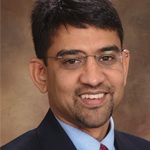
© ESB Professional / shutterstock.com
Americans, on average, currently spend more than $10,000 a year per person on healthcare. This is a dramatic and unsustainable increase from an average of $160 per person in 1960. The only real mechanism for both decreasing the cost and improving quality in medicine is through innovation and the creation of new technologies. As a result, the U.S. medical system, with otolaryngology-head and neck surgery being no exception, is in desperate need of innovation.
So why is innovation so difficult in our field? There are tremendous challenges and requirements inherent to surgical innovation. For one, training a practicing otolaryngologist requires 13 to 15 years of education and an aggregate combined cost to the student and society of greater than one million dollars. Most practicing otolaryngologists starting their careers, typically in their early 30s with several hundreds of thousands of dollars in educational debt, are risk-averse and are not looking to enhance their risk by devoting a significant portion of their careers to the creation of new technology. Furthermore, technology creation is not a core portion of medical school or residency training, and access to mentors and the experiences of medical inventors are not readily available to most otolaryngologists.
Despite these challenges, most of our workforce chose otolaryngology because of the possibility of making a positive and lasting impact on the lives of others. Young otolaryngologists bring creativity and a fresh outlook to the problems facing our patients. Older otolaryngologists bring years of mastery and an exquisite understanding of the salient aspects of particular challenges in our field. Academic otolaryngologists have access to scholars from a wide variety of disciplines to provide collaborative input on solving difficult problems. Private practice otolaryngologists have tremendous insight gained from the large, accumulated volumes of patients and experiences on the front lines of medicine and exposure to the entrepreneurialism required to be successful in new ventures. As a result, almost all courageous otolaryngologists are uniquely suited to bring their skillset and experience to drive innovation in our field.
How to Start
So where to begin? The first step involves identification of the most expensive problem facing our patients, with which the otolaryngologist has sufficient expertise. The problem has two obvious components: cost to the patient and number of patients facing this problem. The overall cost to society needs to be greater than the development costs, which typically are greater than one million dollars in aggregate for medical devices, diagnostics, and especially therapeutics. This is a significant, but not insurmountable, burden. As a result, beginning inventors should not devote their limited time and resources to developing solutions for inexpensive, rare problems. This is the first major obstacle to successful commercialization of a new invention: choosing the wrong problem to work on.
After the optimal problem has been identified, the inventor needs to develop novel solutions and have a willingness to fail. American otolaryngologists are individuals who have experienced tremendous success in their careers and are often reluctant to risk their reputations and prestige by championing ideas that are unsuccessful. However, all innovation will pass through an initial development cycle where almost no one but the inventor believes in its success and has the passion to develop and disrupt an established market/system. Having the courage to fail and the willingness to refine but passionately believe in your ideas is a requirement for successful invention.
Next, otolaryngologists need to educate themselves early on the FDA requirements for receiving approval to market Class I, Class II, and Class III devices and drugs. These regulatory requirements are easily accessed at the FDA websites. Ideally, these should be understood before an inventor embarks on the design and creation of a novel medical solution unless the solution involves non-medical aspects of patient care (physician workflow, improved documentation methods, and so on). Arcane requirements in diverse fields such as biocompatibility, sterilizability, and electrical safety, and potential development costs such as clinical trial requirements, will help drive initial refinements to the design of a solution.
At this point, inventors are ready to document and lay ownership to their intellectual property. This is done typically by creating annotated handwritten drawings of a solution and providing explanations of why this solution is an improvement over any predicate devices or how no solution for the problem exists. Inventors should date and sign their drawings, typically in a lab notebook, and ideally have another trusted party witness and co-sign the initial creation of their medical intellectual property.
Having the courage to fail and the willingness to refine but passionately believe in your ideas is a requirement for successful invention. —Subinoy Das, MD
Developing a Business
Private physicians should form their own small business via an LLC or, ideally, a C-corporation, which is the preferred instrument for raising future capital, as well as file a provisional patent with the USPTO. This is a convenient way to extend intellectual property protection for 12 months with a nominal cost.
Physicians may consult with a patent attorney (often quite expensive) if necessary. Academicians should file an invention disclosure with their licensing office and directly contact their institutional licensing leadership to discuss their invention. The licensing office, at the bequest of a demanding and non-passive inventor, will often file a provisional patent on behalf of the inventor, particularly before any poster or oral presentations are given about the invention. The academician will need to continue to be aggressive with their licensing office, lead in the development process, and not expect to be able to hand off any inventions to the control and development of their licensing office.
Next, the inventor will need to become familiar with the basics of several diverse aspects of business development and commercialization. This includes developing a team, prototyping, going through the full patent process, raising capital, marketing, and fulfilling FDA submission requirements.
Academicians will find mentorship and support in their institutional licensing offices, and often their translational science departments and programs. Private physicians can receive mentorship from government-sponsored startup incubator programs, rotary clubs, and other successful entrepreneurs.
Inventors will soon learn that they do not possess the aggregate expertise required to develop a new invention and will need to inspire others to join their team: This includes executive officers, design and prototyping engineers, finance executives, marketing and sales managers, FDA consultants, manufacturing engineers, and others, depending on the invention. Team development will require the parting of a large portion of ownership rights to any invention. Another important foundational component is seed money to support the initial development. Private otolaryngologists typically raise initial money from friends and family and, if lucky, angel investors, often met at innovation conventions. Academic otolaryngologists often fund initial inventions through grants. Grants that have an end-invention clearly defined and a development pathway described are increasingly preferred over classic grants for the development of new basic science.
If an inventor can get through the early years of the development process, then they still must complete on average of seven years of work to obtain an approval from the FDA for a new medical device/therapeutic. At this point, however, many of the early naysayers reclassify themselves as ardent supporters, and avenues of financial and development support will increase. With continued diligence, passion, hard work, and luck, the inventor will hopefully become successful in implementing their new technology for the betterment of our field.
While the risks for failure are great, and the rewards often take several years, if not decades, to achieve fruition, it is these endeavors that often have the greatest impact on humanity and are most often recounted in the history of medicine. Otolaryngologists must embrace innovation and define our field for the future.
 Subinoy Das, MD, is CEO of the US Institute for Advanced Sinus Care and Research. His NIH-sponsored research on rapidly detecting bacterial sinus infections was the recipient of the 2013 Triological Society’s Edmund Prince Fowler Award and has been featured on CNN. He has received several international patents for this work, and is actively involved in the commercialization of this and many medical devices.
Subinoy Das, MD, is CEO of the US Institute for Advanced Sinus Care and Research. His NIH-sponsored research on rapidly detecting bacterial sinus infections was the recipient of the 2013 Triological Society’s Edmund Prince Fowler Award and has been featured on CNN. He has received several international patents for this work, and is actively involved in the commercialization of this and many medical devices.